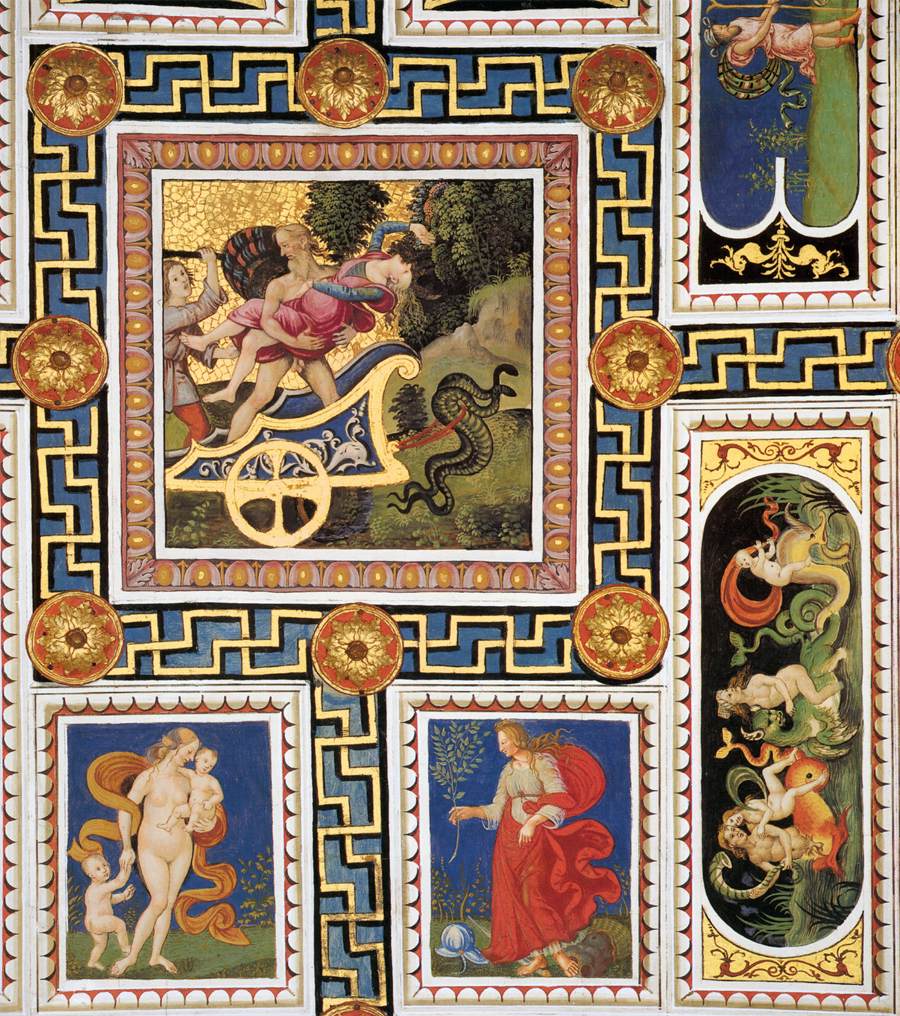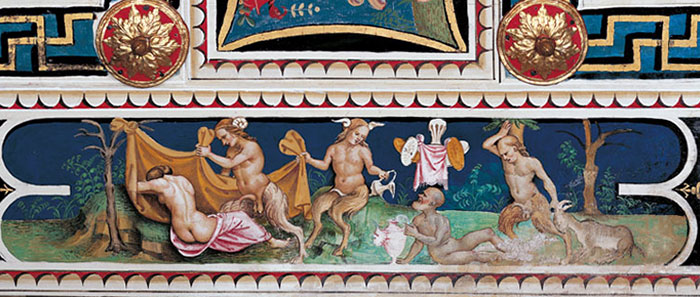The Piccolomini Library in the cathedral of Siena is famous for its epic series of historical, narrative murals commemoratina the life of Aenea Silvius Piccolomini (Pope Pius II), elected pontiff in 1458.
The visual impact of these very colourful frescoes is stunning. The frescoes tell the story of the life of Siena's favourite son, cardinal Enea Silvio Piccolomini, who eventually became Pope Pius II. He was the uncle of cardinal Francesco Todeschini Piccolomini (then archbishop of Siena and the future pope Pius III), who commissioned this library in 1492 as a repository of the books and the manuscript collection of his uncle. The ceiling is covered with painted panels of mythological subjects. They were executed between 1502 and 1503 by Pinturicchio and his assistants.
The murals of the Piccolomini Library in Siena Cathedral, featuring episodes from the life of Pope Pius II, are usually discussed as distinctly separate from the vault imagery, predominantly all'antica and mythological scenes. The latter, combined with the centrally-placed, antique statue of The Three Graces, has led some authors to comment on the library's overtly 'pagan' content as shockingly incongruent with its setting in the sacred precincts of the duomo.
The library vaulting, distinguished by its wealth of colour and figures, is one of the earliest surviving examples of a deliberate and very precise imitation of classical design. It has yet to be determined whether the figures and scenes incorporated into the picture compartments of the library vaulting represent some specific iconographic concept or simply arbitrary borrowings from classical models.
The decoration of the ceiling consists of grotesque decorations, donor coats of arms, dedicatory inscription, allegorical and mythological scenes.
Two larger panels depict episodes from classical mythology (Diana and Endymion and the Rape of Proserpina) and the arms of Cardinal Todeschini Piccolomini – five crescents beneath a cardinal's hat – loom large in the centre of the ceiling.(5, OPA)[2].
|
Pinturicchio's depiction of Diana and Endymion on the ceiling of the Libreria Piccolomini in Siena cathedral is not in itself particularly unusual. For once, Endymion seems to be caring for cattle rather than sheep (an echo of Theocritus perhaps), but the scene of Diana stepping out of her chariot and approaching the sleeping herdsman is derived from ancient reliefs. What is strange is its pairing with the rape of Proserpina, which is depicted in the same terms (Pluto carries off Proserpina in his chariot). The link between the two may come directly from Fulgentius, whose explication of the story of Diana and Endymion noted that just as the Moon ruled the woods as Diana, so she ruled the lower world as Proserpina. The two scenes therefore show a direct parallel: the Moon as Diana drawn down from the heavens to the earth by her love for Endymion, and the Moon as Proserpina drawn, rather more forcibly, from the earth to the underworld by Pluto. In the context of the Piccolomini library, this emphasis on lunar rule was part of the celebration of lunar imagery associated with the Piccolomini family. [4]
|
![]()




